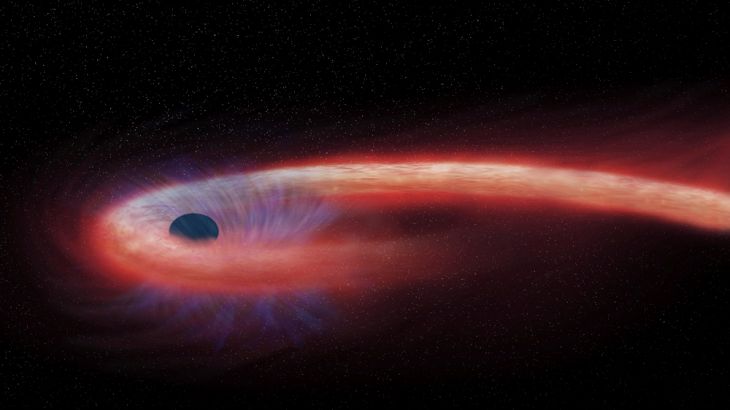Black hole hunters pleased with first attempt
Scientists around the world are working to capture an elusive image of a black hole for the first time ever.

A hundred scientists in eight locations around the world have coordinated efforts over the past two weeks to capture the first-ever image of a black hole.
The project, called the Event Horizon telescope, is hoping to get a picture of Sagittarius A*, the supermassive black hole shielded by dust and gas 26,000 light-years from Earth, at the centre of our Milky Way galaxy.
Keep reading
list of 4 itemsHong Kong’s first monkey virus case – what do we know about the B virus?
Why will low birthrate in Europe trigger ‘Staggering social change’?
The Max Planck Society must end its unconditional support for Israel
To do this the scientists combined the power of eight radio telescopes in Spain, Mexico, Chile, the United States and Antarctica.
“The bigger your telescope, the better your resolution,” Heino Falcke, a professor of astroparticle physics and radio astronomy at Radboud University in the Netherlands, told Al Jazeera.
|
|
“We need to [be able to] see a mustard seed in New York from Europe and need a telescope the size of the Earth to get that resolution. Couple radio telescopes around the world [together] and then you essentially get that.”
Unlike traditional optical telescopes that detect light waves, radio telescopes pick up radio frequencies emitted by objects such as planets and stars. These are frequently very weak, which is why large telescopes are needed.
“They need to be at very high mountains because humidity absorbs those radio waves,” said Falcke.
Radio telescopes have been linked together in this way for more than 30 years, but this is the first time so many have been focused on one part of the galaxy at the same time.
Although the team said this initial attempt went well, they will have to be patient.
Each telescope produces 2-3 million gigabytes of data per night during the experiment, making the transmission of the data a challenge.
“It is stored on hard drives as it is impossible to send by the internet right now, particularly from Antarctica where it is now winter and there are no flights back, we have to wait half a year to get all this data together and combine it,” said Falcke.
The data will also have to be correlated, a complicated process that researchers said could take up to a year.
Once it is analysed, the team hope to have an image of black hole and the bright matter that is believed to hurtle around it.
“It may be like a solar eclipse where you see a dark shadow in the middle and then fire around,” Falcke said.
Hawking: There may be a way out of black holes
This ring is called an event horizon, the area around a black hole where the gravitational pull is so strong it makes escape – even for light – impossible.
Falcke said getting an image and a better understanding of this “exotic” region is important as it would confirm or challenge the fundamental theories that underpin physics.
“We think [black holes] exist but we have never seen it, so proving that it actually exists in our universe I think is very fundamental,” he said.
“[If] you can test it and measure it very precisely in the years to come, [you will] see whether Einstein is correct with his ultimate theory of time and space, or do we need to change it?”
To do this the researchers hope to add additional telescopes to the array in coming decades, allowing them to conduct even more precise observations of black holes and their effect on the universe.
|
|